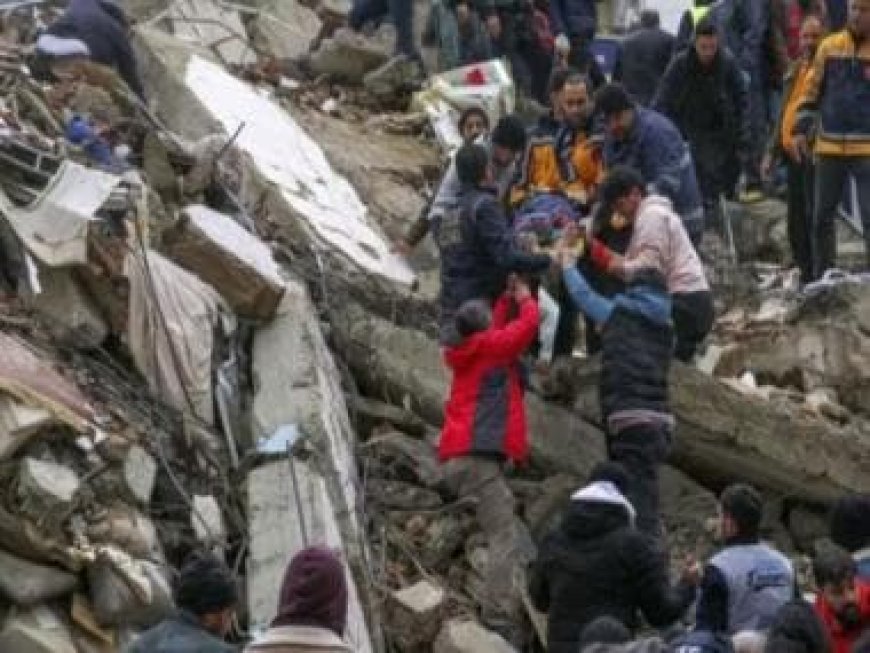10 worst man-made environmental disasters since World War II
10 worst man-made environmental disasters since World War II

Since the end of World War II, the scale and severity of environmental incidents have increased, highlighting the dire consequences of human actions on the environment. Here are the 10 worst environmental disasters since World War II.
Minamata Disease (1956-1968)
Minamata disease was caused by industrial mercury pollution in Minamata Bay, Japan. The discharge of mercury-contaminated wastewater led to severe neurological disorders and death among the local population, as well as devastating effects on aquatic life.
Love Canal Disaster (1978)
The Love Canal disaster involved the release of toxic chemicals from an abandoned landfill in Niagara Falls, New York. The chemicals contaminated the soil and water, leading to health issues and birth defects among residents. This incident triggered widespread awareness of hazardous waste disposal practices.
Three Mile Island Accident (1979)
A partial meltdown at the Three Mile Island nuclear power plant in Pennsylvania, USA, led to the release of radioactive gases. Although no deaths or injuries were reported, the incident resulted in increased concerns about the safety of nuclear power and its potential long-term effects.
Bhopal Gas Tragedy (1984)
In the city of Bhopal, India, a gas leak from a Union Carbide pesticide plant exposed thousands of people to toxic gases, resulting in immediate and long-term health effects. The tragedy highlighted the need for better industrial safety regulations and the responsibility of corporations.
Chernobyl Disaster (1986)
The Chernobyl disaster stands as one of the most catastrophic nuclear accidents in history. The explosion at the Chernobyl Nuclear Power Plant in Ukraine released a massive amount of radioactive material into the atmosphere, killing 30 operators and firemen within three months and several further deaths later. It also caused long-term health and environmental consequences.
Exxon Valdez Oil Spill (1989)
Off the coast of Alaska, the Exxon Valdez oil tanker struck a reef, resulting in a massive oil spill that released over 10 million gallons of crude oil into Prince William Sound. The spill devastated the local marine ecosystem and had long-lasting impacts on wildlife and coastal communities.
Kuwait Oil Fires (1991)
During the Gulf War, retreating Iraqi forces set fire to over 700 oil wells in Kuwait, resulting in a massive environmental catastrophe. The fires released huge amounts of pollutants into the air, causing air pollution, acid rain, and long-lasting damage to ecosystems.
Baia Mare Cyanide Spill (2000)
A breach in a dam at a gold mining facility in Baia Mare, Romania, caused a massive spill of cyanide-contaminated wastewater into the Tisza and Danube Rivers. The spill had severe ecological consequences, killing fish and other aquatic life and affecting water supplies across multiple countries.
Deepwater Horizon Oil Spill (2010)
The Deepwater Horizon oil rig explosion in the Gulf of Mexico resulted in the largest marine oil spill in history. Approximately 4.9 million barrels of oil were released into the ocean, causing severe damage to marine ecosystems, wildlife, and coastal economies.
Fukushima Daiichi Nuclear (2011)
Fukushima Daiichi Nuclear Disaster, which occurred on March 11, 2011, ranks as one of the most significant nuclear accidents in history. It was triggered by a powerful magnitude 9.0 earthquake and subsequent tsunami off the northeastern coast of Japan.
The disaster unfolded at the Fukushima Daiichi Nuclear Power Plant, operated by the Tokyo Electric Power Company (TEPCO), and had far-reaching implications for the environment, public health, and the global perception of nuclear energy.
The Fukushima Daiichi Nuclear Disaster raised serious concerns about the safety of nuclear power plants and their vulnerability to natural disasters. It exposed flaws in emergency response protocols and regulatory oversight, sparking a global reevaluation of nuclear energy policies.
The environmental consequences of the disaster were profound. The released radioactive materials contaminated nearby soil, water, and marine ecosystems, causing long-term impacts on biodiversity. The incident also had economic ramifications, with the fishing and agriculture industries suffering significant losses due to restrictions on the sale of contaminated products.
This article has been generated using Artificial Intelligence.
Read all the Latest News, Trending News, Cricket News, Bollywood News,
India News and Entertainment News here. Follow us on Facebook, Twitter and Instagram.
What's Your Reaction?



























































